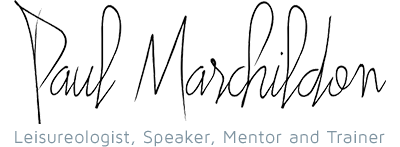How To Get The Most Out Of Summertime Meetings

Know what kind of meetings work best in the summer? I’ll meet you by the pool. I’ll meet you for iced tea on the patio. I’ll meet you in October when the sun’s gone into hibernation. Summer comes but once a year, and then only for a few short months. It’s the ideal time to change up the workplace routine, celebrate the season, and maintain productivity. How? Meet me at the beach, and I’ll tell you all about it.
We Interrupt Your Regularly Scheduled Meeting…
A third of your people are gone, and it’s time for the weekly Wednesday meeting. What do you do? First, ask yourself if you’re having the meeting for the sake of having the meeting. Are you requiring everyone to gather ’round because that’s what you always do?
All meetings, especially recurring ones, need to have clear goals and objectives. What are you trying to accomplish? If a significant number of absences throughout the summer make it impossible to meet those objectives, cancel the meetings. The worst reason to have a meeting is to have a meeting.
Accommodating for Summer – and Maintaining Productivity
If meetings do still meet many, if not all, of your objectives, then, by all means, proceed. Give the gathering the green light, and customize your content and activities to accommodate smaller groups. Say, for instance, that your 10-person team is three short this week. Instead of using the meeting time to train employees on a critical new process, which requires everyone to be present, use it for a session on becoming a better presenter. It will benefit the people there without hurting those on vacation. In other words, it’s useful, great-to-know content, as opposed to must-know-or-you-can’t-do-your-job information. Your meetings still need objectives, but those objectives can shift to allow for vacations, summer hours, and other seasonal activities.
Did Someone Say Leisure?
Instead of looking at your meeting as half-empty, consider it half-full. Try this: Hold the time and make suggestions for alternative activities. You could, for instance, invite everyone to meet over snacks and just socialize. Inevitably, there’ll be some shop talk and some personal discussions, but it’s time spent team-building, participating in restorative activity, and getting a break from the routine.
Whatever the activity, this time doesn’t have to be “absorbed” back into the workday. Instead, it’s a free hour. One they didn’t have before, but do now. They should take advantage. How much more engaged will they be when they “get back to work?”
We did something like this during national sales meetings when we’d have 200-300 clients in Cancun or Miami. While the agenda had plenty of business, I always pushed for more leisure. You don’t bring people all the way to Cancun and then stick them in a conference room for a week.
On Wednesday afternoon, we’d block off time for “Creativity Training.” It conjures up images of role-playing and breakout groups, doesn’t it? Something people in a tropical locale can really get excited about. Anyway, when we’d let them go for lunch, the VP of sales would announce that the “training” was absolute free time. No schedule, no agenda. Just go, do something fun and creative, and tell us all about it tomorrow.
It’s so simple: an afternoon off. But it was an afternoon in a beautiful place with nothing structured to do – an afternoon that was a gift because it was unexpected and unencumbered with other obligations. Learning to take advantage of leisure: we couldn’t have had a more effective – and popular – training. And in no way did it impact our ability to meet our objectives. Win-win.
In the summer, you can break, or at least bend, the rules. Why not shake up the routine and snap people out of the warm weather lull? It’s the perfect opportunity to embrace leisureology, motivate and engage your people, and stock up on some vitamin D for the year.
Before you schedule a meeting just because you’re “supposed” to have one, consider whether using that time differently can benefit your employees and help you achieve your objectives. Sometimes, meeting in the conference room just isn’t as effective and productive as allowing your people to meet their families in the backyard, meet their friends on the course, or meet their coworkers for a long lunch.
